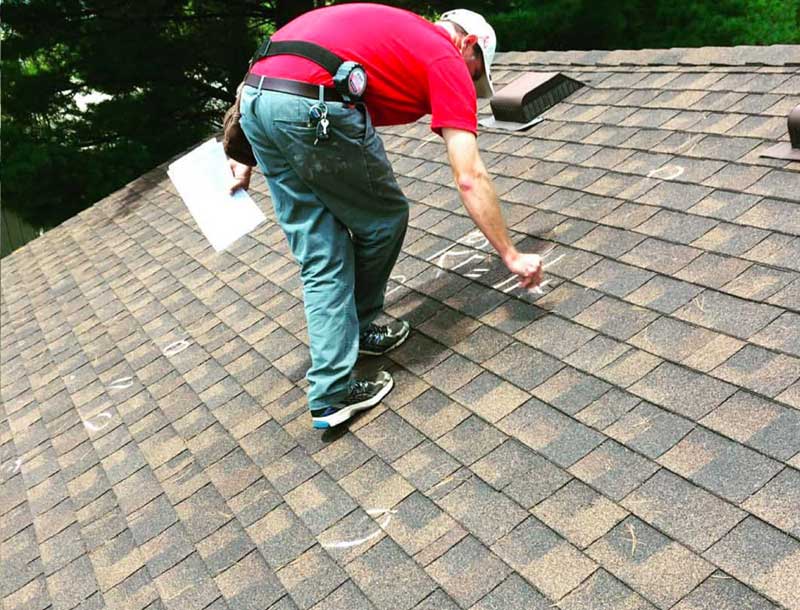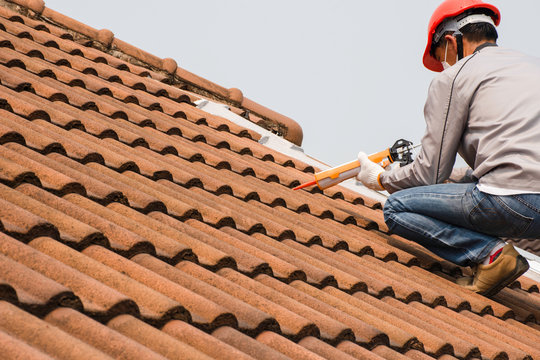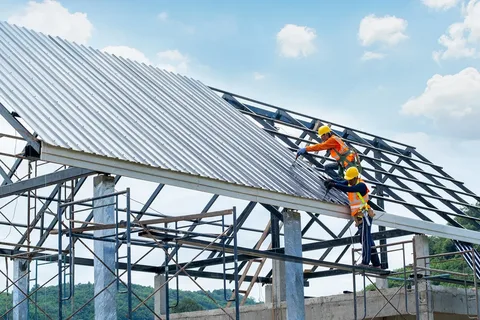If you have a flat roof, you’ve probably enjoyed its clean look and space-saving design. Whether it’s on your home, office, or a building you own, a flat roof is a smart choice. But over time, even the best flat roofs can start to leak—and when that happens, it can lead to serious damage inside.
So, what causes a flat roof to leak? And how do you stop it from getting worse?
In this post, we’ll break everything down in simple terms—no roofing lingo, no confusing tech talk. Just clear answers and tips you can actually use.
Why Flat Roofs Are More Prone to Leaks
Here’s the thing: a flat roof isn’t 100% flat—but it’s close. Because of that, rainwater doesn’t slide off the way it does on a sloped roof. Instead, it might sit there for a while. If the water doesn’t drain off soon, it can start to soak in, causing leaks and even mold over time.
This doesn’t mean your flat roof is a bad choice. It just means you need to pay attention to signs of trouble—and take care of small issues before they turn into big ones.
1. Water Pooling on the Roof
One of the most common problems? Water just sitting there after it rains.
When water doesn’t drain off your flat roof, it forms puddles. That water slowly breaks down the roof surface. And if it keeps happening, your roof may start to leak right into the rooms below.
Simple Fix: Have a pro check the slope of your roof and the drains. Sometimes cleaning the drains is all it takes. Other times, the roof may need a better angle to let water run off.
2. Small Cracks or Holes in the Roof Surface
Over time, sun and weather can wear down your flat roof. This creates small holes, cracks, or soft spots. You may not even notice them—until a leak shows up in your ceiling or wall.
What to Do: A roofing expert can spot these weak areas and patch them up before things get worse. The key is to catch them early.
3. Gutters or Drains Are Blocked
If leaves or dirt block your roof drains or gutters, rainwater can’t drain and starts to build up. It ends up pooling on your flat roof, which can lead to leaks and rot.
Solution: Keep your drains clear. You can do it yourself or have someone clean them out a few times a year. It’s a small job that prevents big problems.
4. Old or Damaged Roof Seals
Where your roof connects with walls, pipes, or vents, there are sealed edges. Over time, those seals can wear out. Once they’re loose or cracked, water can find its way inside.
Best Approach: Have someone look at these joints during routine roof checks. If anything looks loose, it’s better to fix it now than deal with water damage later.
5. Just an Old Flat Roof
Sometimes, the real issue is that your flat roof has just gotten old. Flat roofs usually last between 15 and 25 years, depending on the material and how well you take care of them. If yours is reaching that age, leaks may start showing up even if you’ve taken good care of it.
The Fix: A roof replacement may be the best option. Talk to a trusted roofer who can guide you through your choices without pushing you into anything you don’t need.
How to Know If Your Flat Roof Is Leaking
Here are a few signs that your flat roof may already have a leak:
-
Water stains or brown spots on your ceiling
-
A musty smell inside, especially after rain
-
Paint or drywall bubbling
-
Dripping water in corners or near windows
-
Puddles forming on the roof after it rains
If you notice any of these, don’t wait. A small leak can turn into a big repair job fast.
How Professionals Fix Flat Roof Leaks (The Simple Version)
When you call in a pro to fix your flat roof, here’s what usually happens:
-
They check the whole roof—not just where the leak shows up
-
They find the real problem, whether it’s a hole, a bad seal, or something else
-
They patch or seal it properly, using the right materials
-
They test the area to make sure water won’t get back in
-
They give you advice on how to stop it from happening again
It’s not just about throwing on a quick patch. It’s about making sure your roof stays solid for years to come.
How to Stop Flat Roof Leaks Before They Start
Good news—most flat roof leaks can be avoided with simple upkeep. Here’s how:
-
Clean off leaves and dirt every few months
-
Check for soft spots or cracks twice a year
-
Have a roofing pro inspect your roof each spring or fall
-
Trim trees that hang over your roof to avoid debris
-
Fix small problems right away before they spread
A little prevention goes a long way when it comes to protecting your home.
Final Thoughts
A leaking flat roof doesn’t always mean disaster. Most of the time, it just means your roof needs a little care. If you act quickly, you can avoid costly repairs and keep your space dry and safe.
At JC Master Inc., we’ve helped dozens of homeowners and business owners deal with flat roof leaks. We make it simple, honest, and stress-free. Whether it’s a small repair or a full roof change, we’re here to help you.
FAQ – Flat Roof Leaks & Fixes
1. What’s the biggest reason flat roofs leak?
Usually, it’s standing water or old materials. If water doesn’t drain off quickly, it can start breaking down the roof.
2. Can I walk on a flat roof without damaging it?
Yes, but only in certain spots. It’s best to have a roofer show you where it’s safe.
3. Should I replace my flat roof if it keeps leaking?
If your flat roof is older or has been patched many times, replacement might be smarter (and cheaper long-term).
4. How much does it cost to fix a flat roof leak?
It depends on the size and cause. Small leaks are usually affordable. We always give a free estimate before starting.
5. How do I know if I need a full roof replacement?
If your roof is over 20 years old or has widespread damage, it’s time to consider it. We’ll inspect and give you honest advice.


